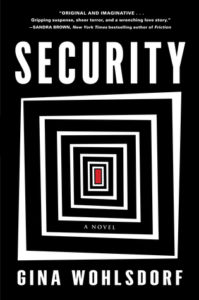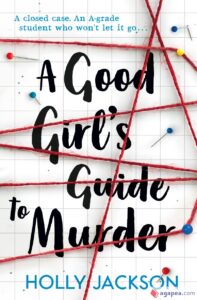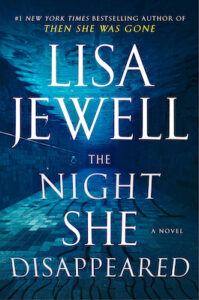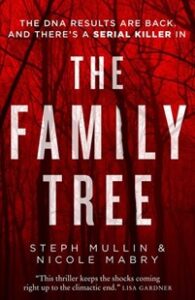As readers of thrillers and suspense, we love the feeling of adrenaline pumping as we sleuth our way through clues left strategically for us by the authors. While we constantly crave these page-turning mysteries and action-packed plots that keep us guessing until the final pages, more and more authors have started turning to unique formats and structure to help them stand out among the masses. Not only does a unique format in a thriller give a breath of fresh air to readers in the genre who see a lot of similar tropes, but it’s also a fascinating and strategic tool for how those delicate breadcrumbs are revealed. These techniques, while more challenging to execute, propel the story forward without unnecessary blocks of explanatory narration. It gives both the writer and the reader a way to explore more characters and possibilities, which is invaluable, especially in a “who done it” scenario.
In our co-authored novel, The Family Tree, giving a unique twist to the format was one of the first decisions we made when planning our story, and one of our favorites. We wanted to go beyond just alternating points of view or single timelines, and really give insight into the many victims taken too soon by our serial killer. To achieve this, we created short victims’ chapters to alternate with our main timeline—each victim chapter covering a new pair of victims in the order they were abducted to show the next step in the killer’s process—over a 40-year period. It gave us an opportunity to explore dynamics between the young woman during varying decades, and how that evolved as the killer’s process evolved, dropping clues along the way. Our main chapters span only a few months’ time, following Liz in present day as she searches for the killer in her family tree after a 23andMe kit turns her life upside down. Both timelines converge in the end to finally reveal the monster who was lurking in the shadows all along.
If you love unique story structure as much as we do, here are six thrillers pushing the bounds of formatting to give an interesting perspective to the thriller genre.

All the Missing Girls by Megan Miranda
A common trend in thrillers is starting the novel at the edge of the climax, just before the revealing end, and then jumping back in time to where it all began to work your way forward. In All the Missing Girls, Megan Miranda turns this trend on its head. She starts at the beginning of the story, just as our protagonist, Nicolette, is returning to her hometown where her childhood best friend went missing ten years before, and then suddenly jumps to the end. We are quickly dropped at the edge of that climactic cliff on Day 15. Each subsequent chapter begins as “The Day Before,” slowly rewinding back, day by day, until we reach where we left off in Chapter 1. Each chapter also begins with its own mystery; clues we have no idea how Nicolette came by, or what their significance is, until we move backwards in time to reconcile where they came from. In pushing these boundaries, Miranda has succeeded in not only creating a thrilling page-turner, but also mysteries within mysteries, upping the tension and the intrigue.

The Two Lila Bennetts by Liz Fenton & Lisa Steinke
Dual timelines and points of view are an effective, often seen tool in the mystery genre. But dual dimensions without spilling over into sci-fi? The Two Lila Bennetts takes on a “what if” concept similar to the 90’s rom-com, Sliding Doors, but with a mystery. Lila Bennett is a successful criminal defense attorney who has a long list of enemies. At an early pivotal point in the book, the story cracks into two dimensions: Lila blows off her husband in favor of a drink with her boss, or Lila declines the drink and goes home instead. This one moment decides whether or not Lila will be kidnapped. With this structure, we get two stories in one, the path where she’s been taken, and the path where she is free, frantically hunting her stalker. The parallel stories are told in alternating chapters, one path titled “Captured” and the other titled “Free.” This format has us wondering not only who has it in for Lila, but also which of the stories is the real path Lila has taken.

Security by Gina Wohlsdorf
The creative way that Wohlsdorf chose to tell the story of a luxury hotel that boasts the best security in the world, just days away from its opening, puts Security is in a class all its own. The chapters switch between regularly formatted chapters and others told from the perspective of the many security cameras on the property. Both perspectives are told in short staccato, often repetitive phrases, that mimic how we would expect a tier of security footage to look, jumping from camera to camera all in one page. We follow Tessa, the head of the hotel, as she flurries around the enormous building giving orders. The scenes blink back and forth between cameras on different floors and rooms, offering a glimpse of what every person in the hotel is doing, including the killer. This is done so elegantly that we feel like we are actually watching a bank of security cameras wink and breathe with movement. This also allows for clever juxtaposition of seemingly opposite scenes, like a quiet intimate moment interspersed with the killer creeping around corners, paralleling opposite intense emotions simultaneously. Our mysterious narrator and the cameras both speak in first person at times, leading us to believe that the cameras and the narrator are one in the same. This inventive way of telling the story keeps the reader on their toes and creates room for Wohlsdorf to drop little bombs of information that are often surprisingly poetic in verse. Security is on the cutting edge of story structure, coloring outside the lines with hectic abandon. Because of its graphic nature, this book may need a trigger warning for some readers but is worth a read for its ingenuity.

Girl, 11 by Amy Suiter Clarke
Girl, 11 is the story of the now dormant Countdown Killer who went on a killing spree 20 years ago. Now he’s back and Elle Castillo is determined to find out why and who he is on her popular podcast series, Justice Delayed. Told from Elle’s perspective, we get alternating chapters from Elle’s life mixed with chapters highlighting the podcast’s episodes. The podcast chapters have all the technical marking of the production of a podcast present. We are brought into each episode with theme music and a voice-over intro, the background noise of every location is incredibly detailed, voice-overs punctuate each episode with Elle’s inner thoughts, and we even get sound breaks in the middle to mark a change in interviewees. The result of Clarke pushing the limits of how podcasts are not only made, but heard, makes us feel like we are listening to each episode rather than reading it. We can hear the crunch of boots in snow or background noise in the diner, the scrape of a door squeaking open, a pause when someone blows their nose. All these details carved into the formatting make the episodes real. Because of this structure, the twist at the end is made all more surprising and impactful, creating a compelling and unique thriller.

A Good Girl’s Guide to Murder, by Holly Jackson
What makes A Good Girls’ Guide to Murder such an interesting page-turner is that instead of standard alternating point of view chapters, it alternates the main narrative with documents from our protagonist, Pippa Fitz-Amobi’s, senior capstone project. Five years prior, a popular girl from Pip’s high school, Andie, was murdered by her boyfriend before he committed suicide. Pip’s project focuses on investigating the murder-suicide, not convinced that Andie’s boyfriend was really at fault. The document chapters reveal Pip’s research including source citations, text messages, interviews and police transcripts, the victim’s planner pages, suspect lists and more. The documents push the story forward by taking you on Pip’s research journey, adding more evidence to the plot in a unique way that really “shows” rather than “tells”. At times, there are even graphic illustrations rather than sentences, or handwritten notes scribbled in an attempt to connect the dots. It makes the experience authentic, as if you are Pip completing the project yourself. It allows you to unravel the clues alongside Pip, propelling you forward to see what you’re going to uncover next.

The Night She Disappeared, by Lisa Jewell
Lisa Jewell is a master of prose that keeps you turning the page, and The Night She Disappeared is no different. One summer night, a young woman and her boyfriend disappear, leaving behind a new baby. A year later, a different couple moves into a home bordering the woods near where the initial couple disappeared from. Jewell drops you right into the mystery from page one by starting with what appears to be an innocent dictionary definition at first glance, but turns out to be a haunting and poetic prologue hinting at the darkness to come. Then, she expertly alternates chapters in a way that takes it a step beyond multiple points of view. Not only do the chapters alternate between several different characters’ actions, but they also jump back and forth between several timelines to show different paths surrounding the missing couple’s disappearance. It’s clear quickly that all the paths will intersect, leading us to the truth, and Jewell pulls you along using the different timelines to drop intriguing breadcrumbs that make you want to desperately connect the dots.
***


















